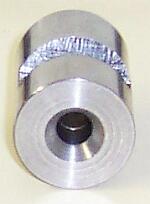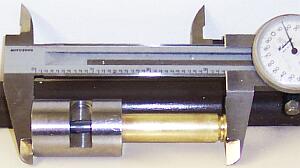1.505" 600-Yard Agg — Brady Does It Again
Terry Brady’s name is synonymous with 600-yard world records. On July 14, shooting at the Piedmont range, Terry smashed his own IBS 600-yard Aggregate world record. Running his 15.5-lb 6BR in the Heavy Gun Relay, Terry nailed an amazing 1.5055″ 4-target Agg. Two of his 5-shot groups were under 1.3″! Target by target, here are his groups: 2.063″, 1.209″, 1.469″, 1.281″ (all subject to IBS verification.)
Terry told us: “The conditions were great. Mild temps, very little mirage, almost no wind. I shot completely free recoil and was able to drill ‘em right in there. I don’t think I looked up at the flags once I started a group.” Previously, in May, at the same Piedmont range, Terry also shot two pending IBS 600-yard records, with a 50-score (1.093″) in Light Gun, and a 50-score (1.175″) in Heavy Gun. Terry says: “As far as I can tell I have four pending world records right now.”

Terry set the new Agg record with the same 6BR rifle that produced Terry’s .860″ single-group IBS record (READ Story HERE). However, the gun has a new Krieger 8-twist barrel and Terry was using the new Spencer 103 BT bullets. In the past Terry shot moly Berger 105s. Recently he switched to shooting naked bullets: “Quite a few boys ’round here have been getting real good results shooting naked bullets lately, so I thought I’d give it a try.” He still uses Berger 105s, but recently tried out the Spencers. In his testing the Berger 105s shoot best in warm weather, but the Spencers shot better in cool to moderate air.
At the 7/14 Piedmont match, Terry shot naked Berger 105s in the first Light Gun Relay. That produced a 2.527″ Agg. Then he cleaned his barrel quickly, and switched to the Spencer 103s, loaded with 30.0 grains of Reloader 15. Terry said the weather was pretty mild in temperature, so he thought the 103s might work well. They sure did.
Terry proved it’s wise to read the AccurateShooter.com Bulletin: “I was on your website last month, and learned about the new Clay Spencer 103s. Jason said they were some of the most consistent bullets he’d ever measured, so I though I’d give them a try. I called Clay, but he didn’t have any left. I managed to get some from Glenn Burroughs.” Terry joked: “Please don’t tell the other folks how well the Spencer 103s are shooting–let me win a few more matches first.”












 Rich DeSimone uses a handy “Stub Gauge” for setting shoulder “bump” and seating depth. The gauge is made from a section of barrel lopped off when the muzzle is crowned. The chambering reamer is run in about 1/4 of the way, enough to capture the neck and shoulder area of the case. Rich then uses his full-length die to “bump” a master case with the ideal amount of headspace for easy feeding and extraction. He takes that case and sets it in this Stub Gauge, and measures from the front of the gauge to the rim. He can then quickly compare any fired case to a his “master” case with optimal headspace. Since the gauge measures off the shoulder datum, this tells him how much to bump his fired brass.
Rich DeSimone uses a handy “Stub Gauge” for setting shoulder “bump” and seating depth. The gauge is made from a section of barrel lopped off when the muzzle is crowned. The chambering reamer is run in about 1/4 of the way, enough to capture the neck and shoulder area of the case. Rich then uses his full-length die to “bump” a master case with the ideal amount of headspace for easy feeding and extraction. He takes that case and sets it in this Stub Gauge, and measures from the front of the gauge to the rim. He can then quickly compare any fired case to a his “master” case with optimal headspace. Since the gauge measures off the shoulder datum, this tells him how much to bump his fired brass.





